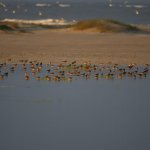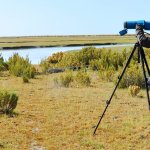From September 6-9, the Western Hemisphere Shorebird Group held its ninth bi-annual meeting, bringing together shorebird researchers, conservationists, students, and enthusiasts from across the hemisphere. Postponed from 2021, this forum is an opportunity to promote conservation across flyways and increase the public’s awareness of shorebirds by sharing information on research, monitoring, management, conservation and education in the Western Hemisphere.
The WHSRN Executive Office hosted three symposiums on human well-being, shrimp aquaculture with shorebird conservation, and flyway-wide conservation.
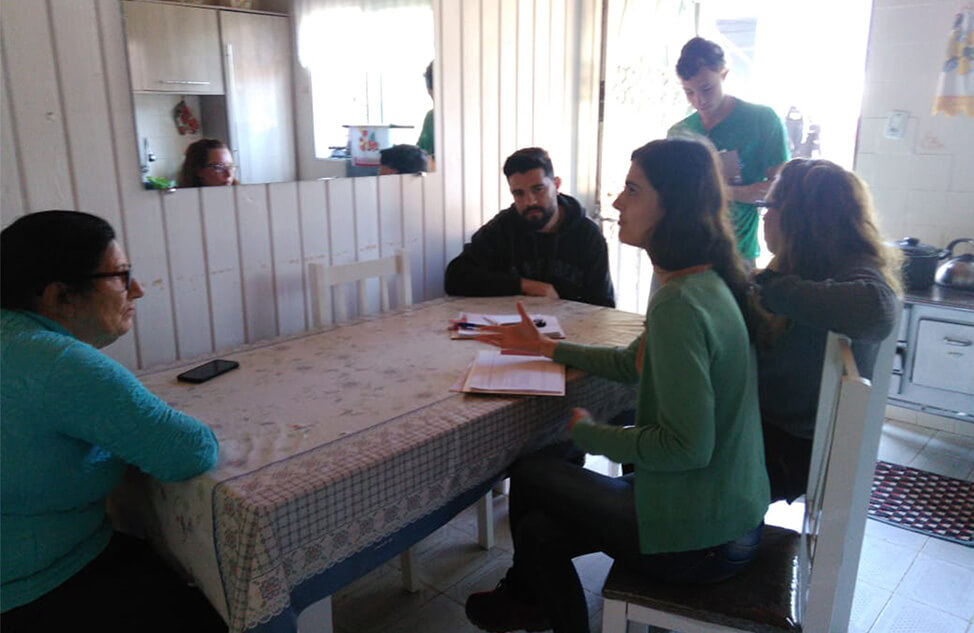
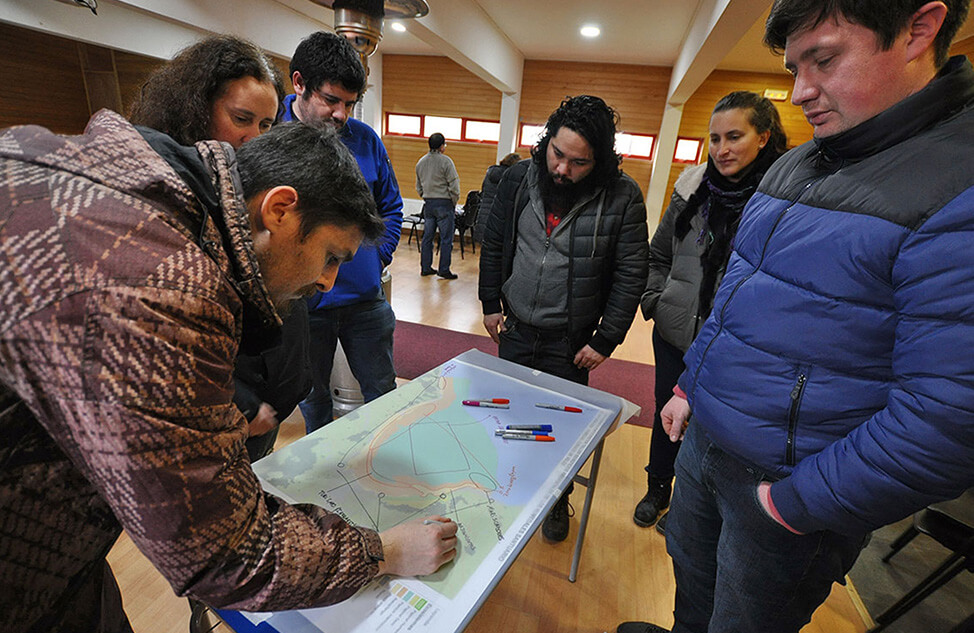
Left: Conducting interviews to understand the role of Lagoa do Peixe National Park in the community. Photo: Raquel Carvalho. Right: Mapping ecosystem services during the workshops Curaco de Vélez. Photo: Diego Luna Quevedo.
Shorebird conservation and human well-being: How and why?
This symposium provided an overview of how shorebird conservation is connected to human well-being by discussing ecosystem services. Assessing the status of a site’s ecosystem services can inform the condition of the site, contribute to decision-making, identify management strategies to improve human well-being, and generate economic, cultural, and social support for the conservation of important biodiversity sites. An assessment can also help stakeholders understand how proposed changes will affect the delivery of ecosystem services and thus understand the impacts to communities. This session highlighted ecosystem service assessments at five WHSRN sites, including:
- Informing management plans of three new protected areas (Chile –Maullín & Chiloé)
- Contributing to the nomination of a WHSRN site (Honduras – Golfo de Fonseca)
- Starting to connect with the local communities (Nicaragua – Delta del Estero Real)
- Advocating for maintaining the site’s protection status (Brazil – Lagoa do Peixe)
- Contributing to governance and self-management (Delta de Iscuandé – Colombia)
The assessments were conducted by site partners with support from WHSRN Executive Office with participation of key stakeholders at each site: local communities, authorities, decision makers, scientists, producers, women-led groups, indigenous groups, and other direct site users. This collaborative approach builds trust, gives voice to marginalized communities, and empowers communities to participate in conservation, which provides a real and current view of a site’s services. Collaboration on these assessments can also aid in resolving resource conflicts by opening opportunities for dialogue and negotiation.
The information obtained is valuable for establishing whether there are utilitarian—and intrinsic—arguments for supporting conservation of particular areas (that are, in this case, important for shorebirds). This contributes to a good governance approach to conserving or restoring a site for broader benefits to society from shared resources.
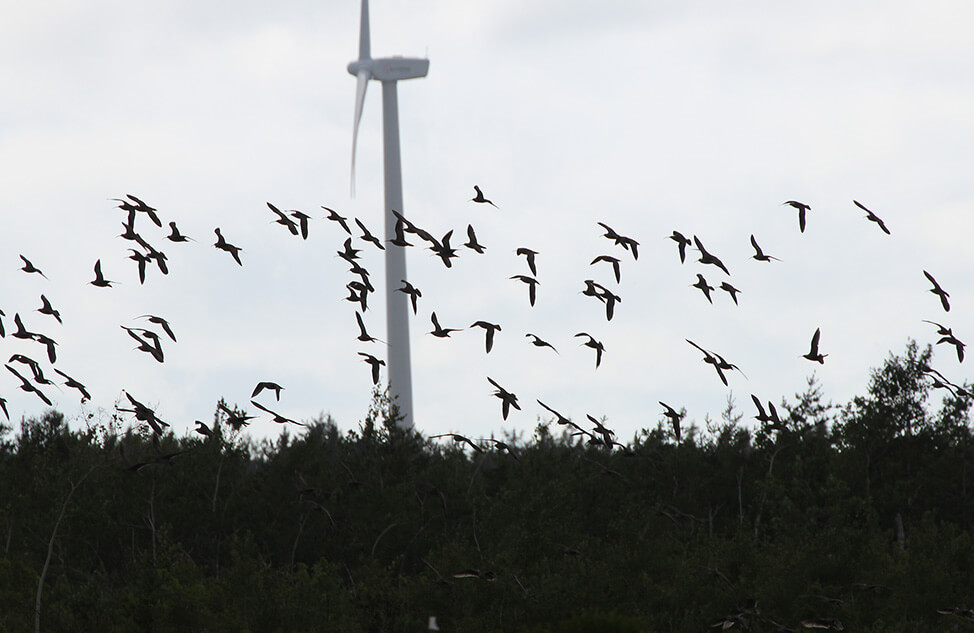
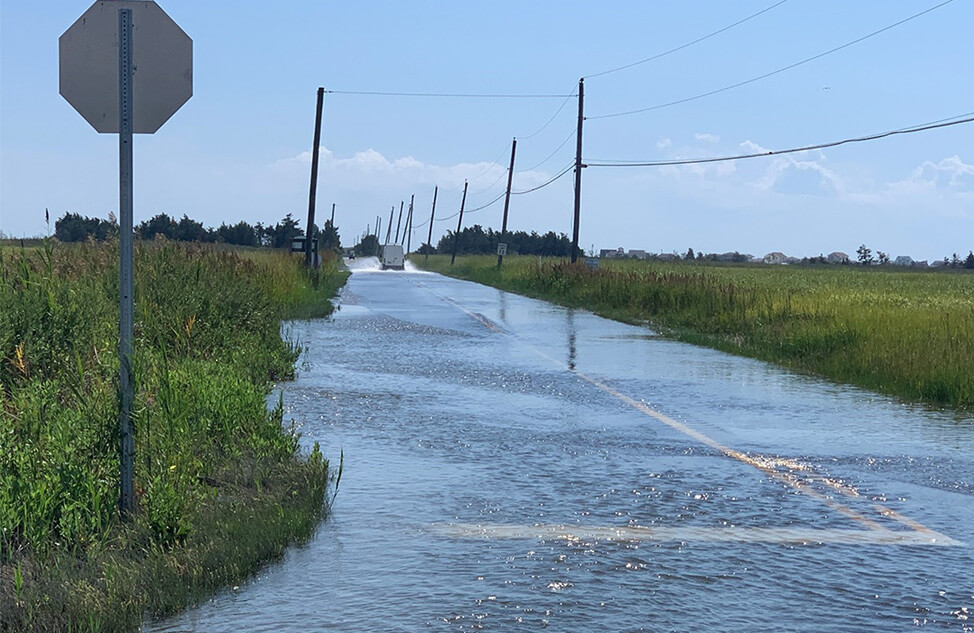
Left: Wind turbines tower over Whimbrels in blueberry fields. Photo: Monica Iglecia. Right: Sea level rise impacts communities and salt marshes at Delaware Bay. Photo: Elizabeth Shuster
Flyway conservation initiatives in the Americas
Shorebirds’ migratory ranges span the Western Hemisphere. Because of this, it is necessary to coordinate research, conservation action, monitoring, and management efforts of many groups across many political boundaries to increase the efficiency of conservation efforts. In recent years, significant progress has been made through the development of strategic frameworks for the Atlantic, Pacific, and Midcontinental Flyways, as well as for Arctic migratory birds. Each flyway initiative represents a concerted effort to engage key stakeholders throughout that flyway and build collaborative approaches to set priorities, target actions effectively, monitor progress to inform adaptive management, and evaluate success. This symposium highlighted the activities in each of the flyway initiatives, as well as emerging issues, collaboration potential between flyways, and discussions on mainstreaming shorebird conservation.
- Atlantic Flyway Shorebird Initiative (AFSI) – As the first flyway initiative created in 2014, AFSI’s recent focus has been on implementing strategies, creating partnerships in new regions to address gaps in engagement, and integrating AFSI priorities into National Shorebird Conservation Plans. Scott Johnston of the U.S. Fish and Wildlife Service (USFWS) also shared that the business plan has been updated to integrate additional priorities including climate change, wind energy development, links to human well-being, and marine spatial planning.
- The Caribbean coast of Central America, Colombia, and Venezuela conducted a participatory process to incorporate the priorities of this region in AFSI, ensuring full geographic coverage of the flyway and providing a comprehensive framework for the full lifecycle conservation of the Atlantic Flyway focal species. Manomet’s Julia Salazar provided a summary of the framework including priority species, sites, and threats, and the strategies and actions needed to maintain populations and reverse declines.
- Pacific Shorebird Conservation Initiative (PSCI) – River Gates of National Audubon highlighted recent activities of PSCI, including on-the-ground conservation projects, development of tools and resources, working groups, and partnership coordination.
- Midcontinent Shorebird Conservation Initiative (MSCI) – Led by Manomet’s Isadora Angarita, Kelli Stone of USFWS, and Benoit Laliberté of Environment and Climate Change Canada (ECCC) the process for the MSCI started in 2019 with efforts to create a strategic framework. Through aConservation Standards process, 277 people from 242 institutions representing 16 countries and territories throughout the Americas developed a strategic framework with seven threats. The next step is to begin partner-supported implementation, including non-traditional partners.
- The Arctic Migratory Bird Initiative has identified plastic pollution as a key issue threat for Arctic migratory shorebirds. Scott Fleming of ECCC shared the results of a literature review of plastics pollution in shorebirds studies. With analyses of species’ relevant biological traits and their environments, it was determined that 53 percent of individuals have had plastics exposure. The review also provided recommendations on sampling protocols and future areas of research.
- Widespread development of offshore wind turbines could both pose collision risks to birds that migrate offshore and alter coastal habitats. However, information gaps prevent comprehensive risk assessments, monitoring, and mitigation development. Rafael Revoreda of Centro de Estudos e Monitoramento Ambiental and Pamela Loring of USFWS presented opportunities for flyway-scale collaborative research, including tracking data on the routes, altitudes, and timing of offshore flights and survey data on distribution and habitat use of shorebirds in coastal areas.
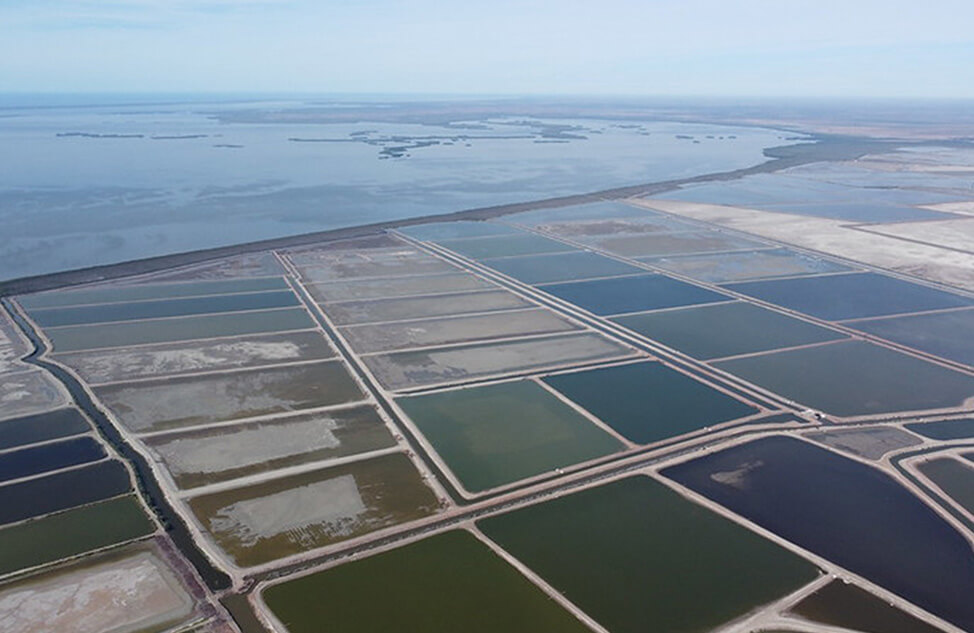
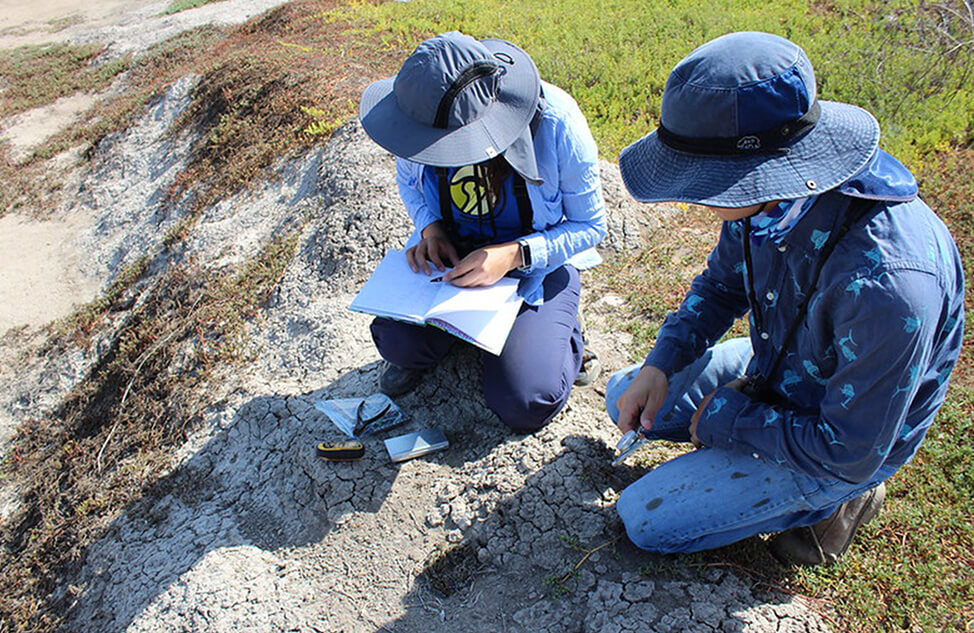
Left: Shrimp farms in Ensenada Pabellones. Right: Monitoring a shorebird nest on a shrimp farm. Photos: Juanita Fonseca
Shrimp farming and shorebirds: Challenges and opportunities for conservation and sustainable management
On the Pacific coast, approximately 500,000 hectares have been converted to shrimp farms, creating conditions with both positive and negative effects on shorebird populations. Due to the growth of this industry on the Pacific coast, more people from different countries have joined the Shrimp and Shorebird Aquaculture Working Group. This group has been generating information on the importance of shrimp farms for these species for more than five years; this symposium shared highlights of relevant research and collaboration:
- In Central America, several organizations are monitoring shorebird use of these productive systems, generating valuable information that contributes to the identification of good management practices. In Guatemala, Nicaragua, Honduras, and Ecuador, they are working with producers to integrate these practices into conservation actions.
- Shrimp farms function as artificial wetlands that provide food and temporary shelter for thousands of shorebirds and waterfowl along the Pacific Flyway. They also provide breeding sites for some shorebird species such as Black-necked Stilt, Wilson’s Plover, American Oystercatcher, and Killdeer.
- Willet and Marbled Godwit have high return rates to the shrimp farms they use as stopover sites during migration along the coasts of northwest Mexico. Their high fidelity may be related to the high abundance of food that these sites provide.
- The Working Group is currently developing a comprehensive conservation assessment that details opportunities to work with the shrimp industry in several Latin American countries, including best management practices that benefit shorebirds and improve production practices.
- The Working Group is working to evaluate each proposed practice according to the specifics of each region. Scientific evidence shows that implementing these practices in shrimp farms will benefit shorebirds while meeting the needs of producers.
Cover Photo: Buff-breasted Sandpipers (Calidris subruficollis) in flight. Photo: Brad Winn.





